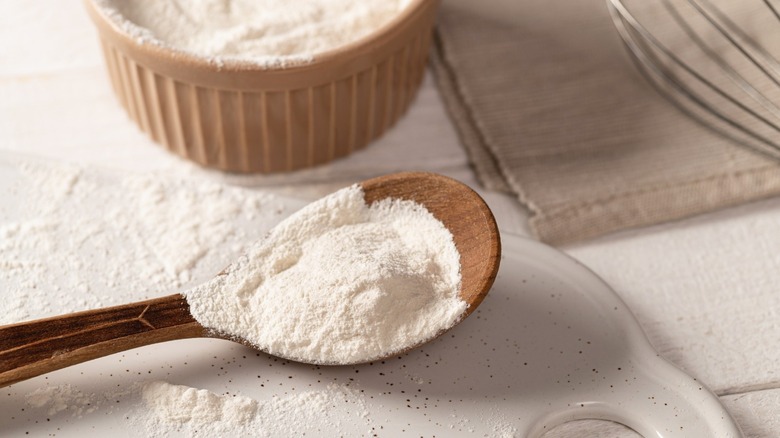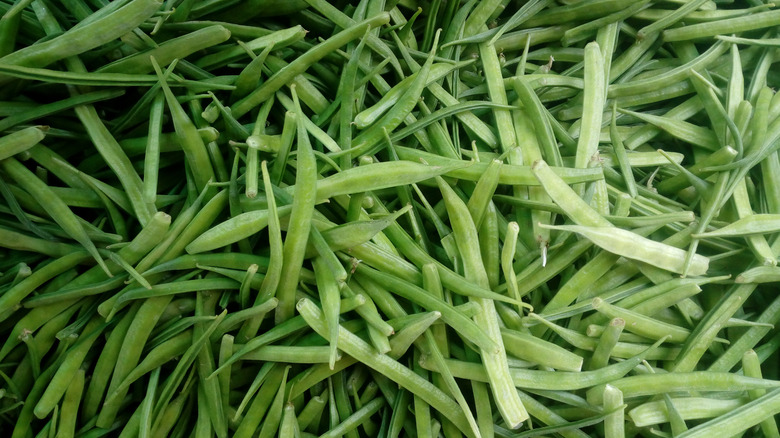What's The Difference Between Xanthan Gum And Guar Gum?
Despite the name, xanthan gum and guar gum aren't conducive to chewing or blowing bubbles, nor are they sold in fruity or minty flavors. Both are food additives that serve as binders and thickening agents to improve texture, but they derive from different sources and contrast in other ways as well.
Xanthan gum is likely the more familiar of the two to Americans as it's found on food labels and is commonly stocked in supermarkets nationwide. It is typically composed of glucose from either corn, soy, or wheat that is combined with a bacterial microorganism named Xanthomonas campestris and then fermented to create a powder, per Bob's Red Mill. Guar gum, as Healthline explains, is a type of soluble fiber that originates from the legume guar beans. The gum is extracted from guar seeds and manufactured into a powder. Historically, it has been primarily grown in India and Pakistan where prime weather and soil conditions exist for its cultivation.
Some common uses for xanthan gum include baked goods, shelf-stable salad dressings, and sauces. Guar gum is generally added to cold and frozen foods like ice cream, yogurt, and puddings. There is some overlap in product use as well, with xanthan gum being used in ice cream, for example, and guar gum in breads and sauces.
Uses for xanthan gum and guar gum
Xanthan gum and guar gum are both often used as thickening agents for gluten-free baked goods and recipes, per Delighted Cooking, though xanthan has a texture more closely resembling gluten. The Gluten Free Club, a resource and information site on living a gluten-free lifestyle, recommends experimenting with a mix of both gums to achieve the best results when making bread sans gluten.
Another way they differ is in their ability to gel, with guar gum requiring the additional assistance of borax or calcium to do the same, whereas xanthan gum is naturally able to gel on its own accord. Guar gum has wide-ranging applications in other industries outside of food as well, including cosmetics, textiles, pharmaceuticals, agriculture, explosives, and paper. Xanthan Gum can also be used in toothpaste, shampoos, creams, paints, and adhesives.
The two gums also differ in price, with guar gum being the most affordable option of the two, sometimes costing three times less than xanthan gum. Most cooking and baking sites note that xanthan and guar gum are largely flavorless and odorless and shouldn't impact the taste of your final product. It's all about refining the texture of foods.

